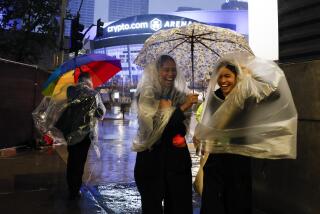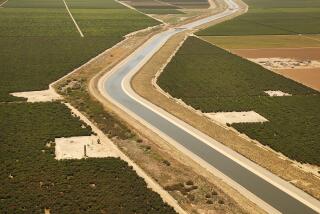One Dry Year After Another
In a special âdry yearâ report on water conditions issued last fall, the California Department of Water Resources said that there may be a slight tendency for dry years to come together. In fact, the historic odds of that happening are about even. But, sure enough, last year and this one are back-to-back water seasons that are officially declared âcritically dry yearsâ in California.
The 1987-88 graph of snowfall in the Sacramento River Basin, which provides the important snowmelt runoff for the state Water Project, is almost a repetition of that of 1986-87: relatively hopeful in December and early January, but terribly dry in February. This year could turn out to be even worse, however, since there was some good snowfall in the mountains in late March a year ago. This year March is gone, and the month was very dry with plenty of sunny, warm weather--good for sunbathers, perhaps, but not for those who have to worry about water supplies.
In Oakland, the East Bay Municipal Utility District announced Wednesday that it may have to ration water for the first time since the 1976-77 drought. If voluntary conservation fails to save enough water, the district may require its 1.1 million customers to cut back on use by 25% through this summer.
In Sacramento, state officials pondered whether to officially declare this a drought year, but that would be a technicality. This is a drought situation, and whether Southern California has enough water or not depends on the carry-over storage in state and federal reservoirs. State Water Project supplies definitely will be short this year, and agricultural customers will find their supplies curtailed. In many cases farmers can supplement that supply by additional pumping of groundwater. Others cannot.
Southern Californiaâs major insurance policy is a continued excess of supply in the giant Colorado River storage system, primarily Lake Powell and Lake Mead in Arizona, imported to the Southland by the Metropolitan Water District. While Metropolitan does not expect to impose any water rationing this year, the dry conditions will force a substantial draw-down of state Water Project reservoirs.
There probably will be enough water this year so that urban Southern California users will not have to experience severe discomfort. But if a third dry year should occur in 1988-89--and remember, the odds of that are about even--the region could face a water shortage comparable to the 1976-77 drought or worse. City and water district officials should launch vigorous voluntary conservation programs now, with a stern message that the region cannot afford to gamble that next year will be all right. Even a normal water year in 1988-89 would not return California to the bounty years of the recent past.
More to Read
Sign up for Essential California
The most important California stories and recommendations in your inbox every morning.
You may occasionally receive promotional content from the Los Angeles Times.










